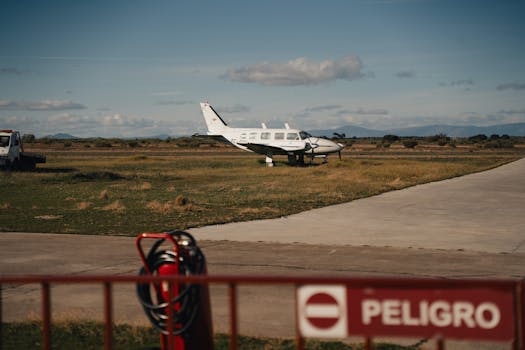
**
Boeing 737 MAX Crisis Revisited: Aging Fleet Sparks Whistleblower Fears, Reigniting Safety Debate
The aviation world is once again grappling with concerns surrounding Boeing's safety record, this time fueled by a whistleblower's alarming allegations regarding the aging Boeing 737 fleet. The revelations, echoing the devastating 737 MAX groundings, have reignited a fierce debate about aircraft maintenance, regulatory oversight, and the potential for catastrophic failures in increasingly older planes. Keywords like Boeing 737 safety, aircraft aging, aviation safety regulations, whistleblower allegations, and airline maintenance are central to understanding this escalating crisis.
Whistleblower's Claims Expose Critical Maintenance Gaps
A former Boeing employee, who wishes to remain anonymous for fear of retaliation, has come forward with disturbing details about alleged shortcuts and inadequate maintenance protocols impacting a significant portion of the Boeing 737 fleet. The whistleblower claims that pressure to meet production targets and cost-cutting measures have led to compromises in crucial maintenance procedures. These allegations encompass a range of concerns, including:
- Insufficient inspection of critical components: The whistleblower alleges that inspections of vital flight control systems, engines, and airframes are often rushed or incomplete, leading to potential undetected flaws.
- Inadequate training of maintenance personnel: Claims of insufficient training and a lack of experienced technicians raise concerns about the competency of those responsible for maintaining these complex aircraft.
- Use of substandard parts: The whistleblower suggests the possibility of unauthorized or substandard parts being used in repairs, significantly impacting the structural integrity and safety of the aircraft.
- Cover-ups and lack of transparency: Allegations of attempts to cover up maintenance issues and suppress internal concerns further fuel the growing distrust.
These accusations are particularly alarming given the already heightened scrutiny surrounding Boeing following the 737 MAX disasters. The crashes, attributed to faulty software and insufficient regulatory oversight, exposed significant vulnerabilities in the company's safety culture and prompted widespread reform efforts.
Aging Aircraft: A Growing Concern Across the Aviation Industry
The concerns raised by the whistleblower extend beyond Boeing. The aging of aircraft fleets worldwide is a significant challenge. As planes age, the risk of component failures and structural degradation increases. This is a global problem that requires proactive strategies for aircraft maintenance and repair, including enhanced inspection protocols and the implementation of advanced technologies to detect potential problems before they escalate. Predictive maintenance, using data analytics to anticipate potential failures, is becoming increasingly important.
Regulatory Response and Industry Reaction
The Federal Aviation Administration (FAA) and other international aviation authorities are under pressure to respond swiftly and decisively. Independent investigations are crucial to verify the whistleblower's claims and assess the overall safety of the Boeing 737 fleet. The aviation industry is closely monitoring the situation, with airlines reviewing their maintenance protocols and potentially adjusting their inspection schedules.
The Need for Transparency and Accountability
The current situation underscores the urgent need for greater transparency and accountability within the aviation industry. This includes stricter regulatory oversight, improved communication between manufacturers, airlines, and regulatory bodies, and a stronger focus on safety culture. The industry must foster an environment where safety concerns can be raised without fear of retaliation. The protection of whistleblowers is crucial to uncovering potential safety hazards and preventing future tragedies.
What are the potential consequences?
If the whistleblower's claims are substantiated, the consequences could be severe. They could lead to:
- Groundings of affected aircraft: A widespread grounding of Boeing 737s could disrupt global air travel significantly.
- Lawsuits and financial penalties: Boeing could face substantial lawsuits and hefty financial penalties.
- Damage to Boeing's reputation: The revelations could further erode public trust in the company.
- Increased regulatory scrutiny: Aviation authorities could impose stricter regulations, impacting the industry’s operational costs and procedures.
Moving Forward: A Call for Comprehensive Safety Reforms
The whistleblower's allegations serve as a stark reminder of the ongoing challenges faced by the aviation industry in maintaining the highest safety standards. Moving forward, a multi-pronged approach is required. This includes:
- Independent safety audits: Regular and independent safety audits are necessary to identify potential weaknesses in maintenance programs.
- Enhanced training and certification: More rigorous training and certification for maintenance personnel are crucial.
- Improved data sharing and analysis: Sharing data between airlines, manufacturers, and regulatory bodies can aid in identifying and addressing safety risks more effectively.
- Strengthened whistleblower protection: Implementing stronger whistleblower protection laws and policies is critical to ensure the safety of air travel.
The situation involving Boeing highlights a complex interplay of factors affecting aviation safety. While the investigation unfolds, the debate surrounding aircraft aging, maintenance practices, and the role of regulatory oversight continues. The aviation community must collaborate to ensure that lessons from past tragedies are learned and implemented, preventing future catastrophes and maintaining public trust. The focus must remain on enhancing safety standards, prioritizing transparency, and fostering a culture of safety above all else. The keywords Boeing 737 MAX grounding, aviation safety, aircraft maintenance, and FAA regulations should be central to any further discussion and analysis of this critical issue.




















